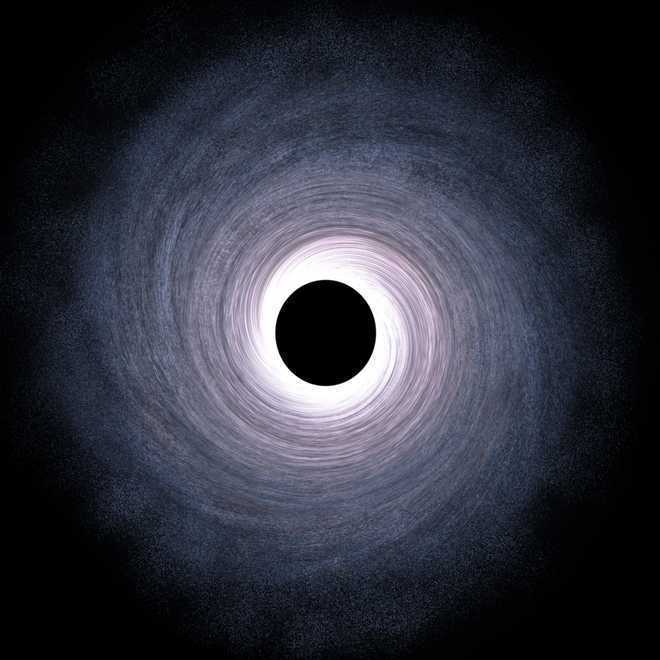
Photo for representation only. Source: iStock.
New York, July 29
Scientists have for the first time directly observed light from behind a black hole—a scenario that was predicted by Albert Einstein's theory of general relativity but never confirmed, until now.
The team at Stanford University noticed an intriguing pattern while watching X-rays flung out into the universe by the supermassive black hole at the center of a galaxy 800 million light-years away.
They observed a series of bright flares of X-rays-exciting, but not unprecedented-and then, the telescopes recorded something unexpected: additional flashes of X-rays that were smaller, later and of different "colours" than the bright flares.
According to theory, these luminous echoes were consistent with X-rays reflected from behind the black hole-but even a basic understanding of black holes tells us that is a strange place for light to come from.
"Any light that goes into that black hole doesn't come out, so we shouldn't be able to see anything that's behind the black hole. The reason we can see that is because that black hole is warping space, bending light and twisting magnetic fields around itself," said Dan Wilkins, astrophysicist at the University.
"Fifty years ago, when astrophysicists starting speculating about how the magnetic field might behave close to a black hole, they had no idea that one day we might have the techniques to observe this directly and see Einstein's general theory of relativity in action," said Roger Blandford, Professor in the School of Humanities and Sciences and Stanford.
The team detailed the findings in the journal Nature.
The original motivation behind this research was to learn more about a mysterious feature of certain black holes, called a corona. Material falling into a supermassive black hole powers the brightest continuous sources of light in the universe, and as it does so, forms a corona around the black hole. This light-which is X-ray light-can be analysed to map and characterise a black hole.
As Wilkins took a closer look to investigate the origin of the flares, he saw a series of smaller flashes. These, the researchers determined, are the same X-ray flares but reflected from the back of the disk-a first glimpse at the far side of a black hole.
"I've been building theoretical predictions of how these echoes appear to us for a few years," said Wilkins. "I'd already seen them in the theory I've been developing, so once I saw them in the telescope observations, I could figure out the connection."
The mission to characterise and understand coronas continues with the European Space Agency's X-ray observatory, Athena (Advanced Telescope for High-ENergy Astrophysics). Athena's Wide Field Imager detector is expected to make new and much clearer observatations. — IANS
Join Whatsapp Channel of The Tribune for latest updates.



























